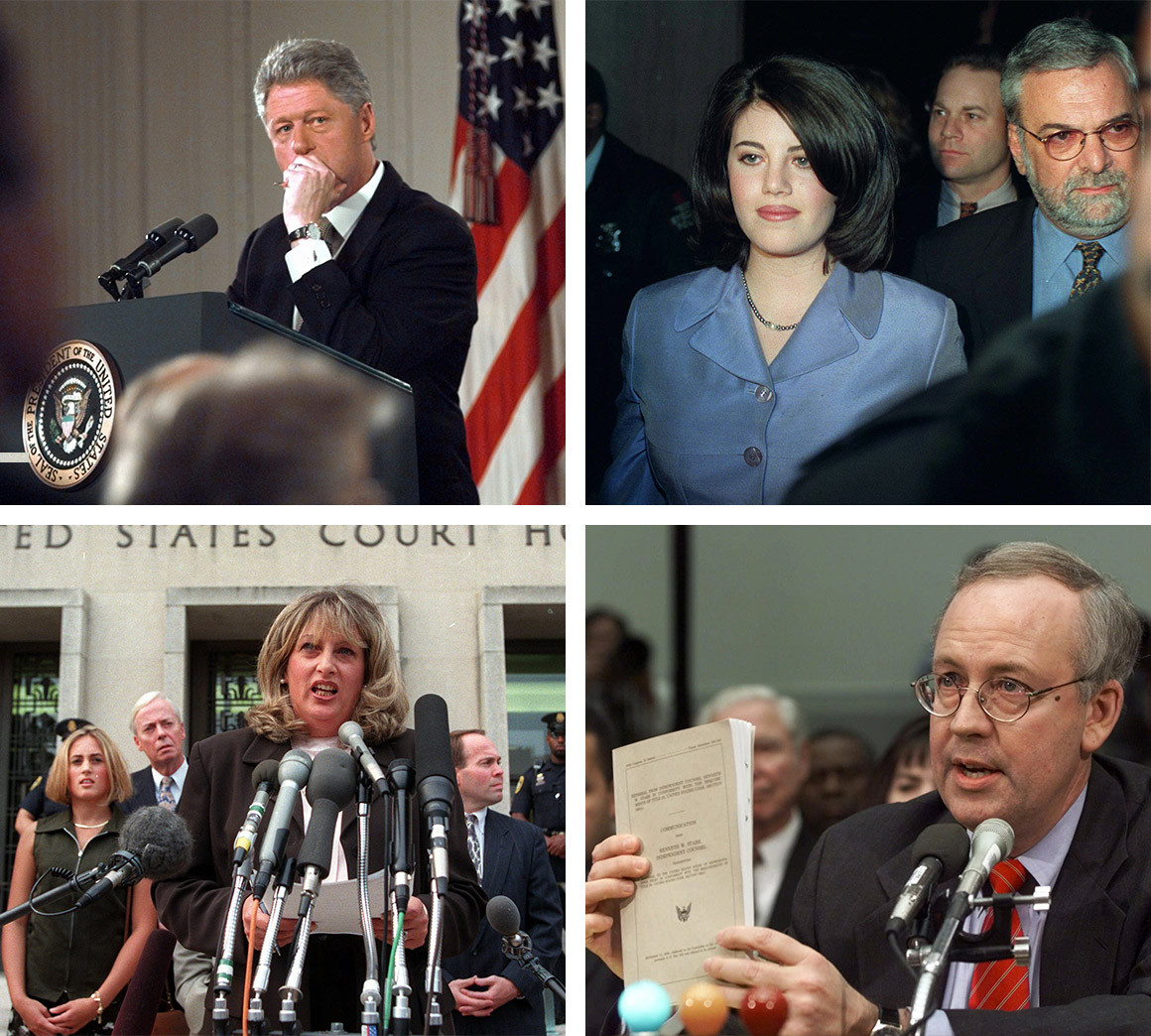The Bill Clinton/Monica Lewinsky Scandal and Subsequent Impeachment: A Defining Moment in U.S. Political History
October 8th 2024 by Fatou Jack
Inside the Bill Clinton/Monica Lewinsky Scandal and Impeachment
Explore the Bill Clinton/Monica Lewinsky scandal and the events leading to his impeachment, a political crisis that shook the White House.
The Bill Clinton/Monica Lewinsky scandal and subsequent impeachment were pivotal moments in the late 20th century that reverberated through American politics, law, and media. It’s a tale that exposes the intersection of personal misconduct, political power, and public scrutiny. The scandal, which ultimately led to President Bill Clinton’s impeachment, not only altered the political landscape but also raised questions about leadership, morality, and the consequences of private indiscretions in the public eye. President Clinton was charged with perjury and going against the justice system (Theatlantic.com).
In this in-depth exploration, we will dissect the events that led to the scandal, the legal and political ramifications, and the aftermath of one of the most infamous political crises in American history. Most importantly we will dive into what caused Clinton’s impeachment.
To learn more about Online Reputation Management, click here.
The Beginnings of the Treacherous Scandal
The Bill Clinton/Monica Lewinsky scandal officially came to light in January 1998, but its roots go back to the mid-1990s. Monica Lewinsky, a 22-year-old White House intern, began an illicit relationship with President Bill Clinton in November 1995. For 11 months, intimate details of Clinton and Lewinsky were going around (Theatlantic.com). Over the course of two years, their encounters were kept secret, with Lewinsky later stating that they engaged in intimate acts on several occasions inside the Oval Office. This was happening while the country was going through turmoil.
The relationship, initially confined to whispers and speculation, took a dramatic turn when Lewinsky confided in her co-worker and friend Linda Tripp about the affair. Tripp, who secretly recorded these conversations, became a pivotal figure in the unfolding of the scandal. It was Michael Isikoff who started his own research and had a meeting with Linda Tripp, to find out the name of the woman Bill Clinton had an Affair with (Theatlantic.com).
To learn more about Online Reputation Management, click here.
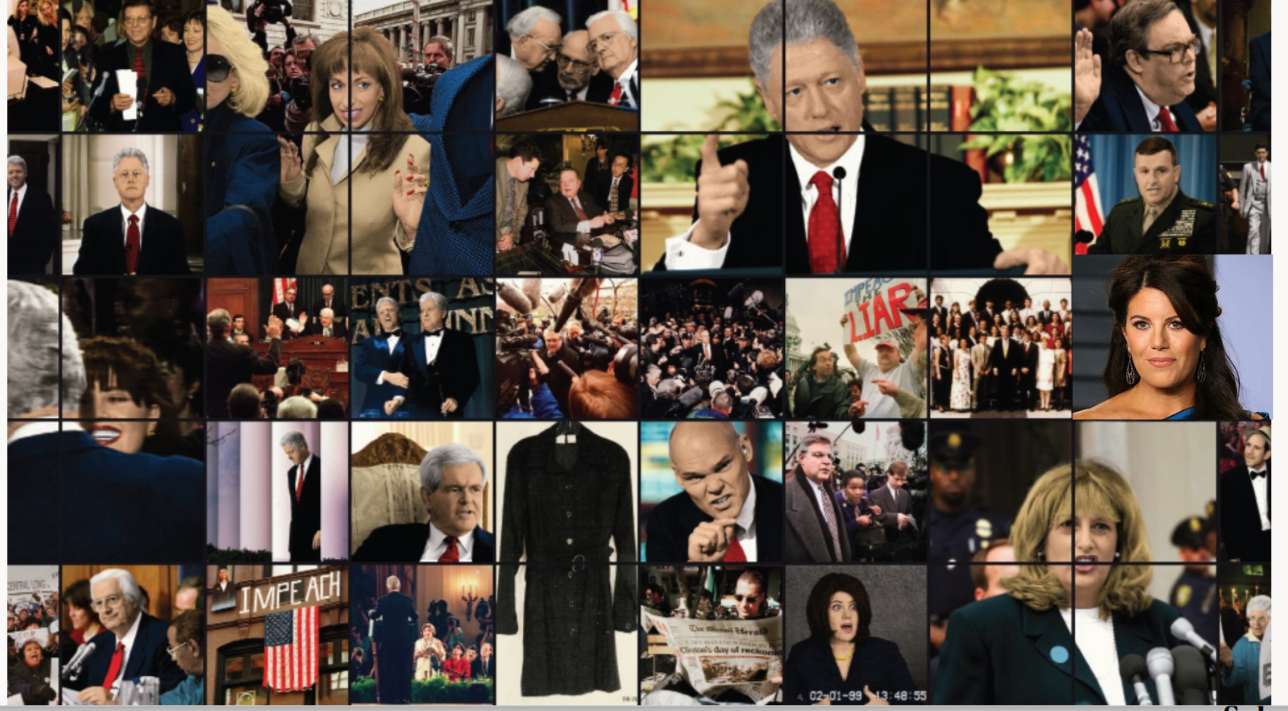
How the Clinton-Lewinsky Affair Became a Public Ordeal
In 1997, Paula Jones, a former Arkansas state employee, had filed a sexual harassment lawsuit against Clinton, claiming that he had made unwanted advances toward her while he was the governor of Arkansas. As part of her legal team’s strategy, they sought evidence of other women with whom Clinton had allegedly had affairs, hoping it would support her claims (History.com).
In January 1998, she turned over the tapes of her conversations with Lewinsky to independent counsel Kenneth Starr, who was already investigating Clinton for the Whitewater real estate deal and other alleged improprieties. Starr received 20 hours of tape from Linda Tripp in 1996 (Waxman & Fabry, 2018). Starr had been appointed to investigate financial and ethical misdeeds involving the Clintons, but the scandal surrounding Lewinsky quickly overshadowed all other matters.
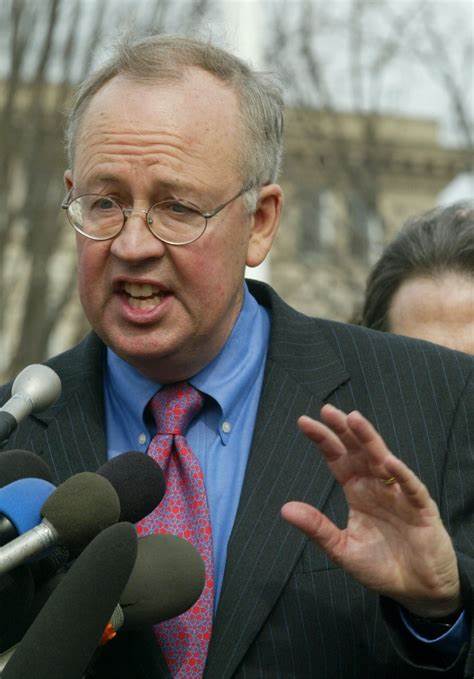
In 1994, Clinton was accused of sexual harassment by a lady called Paula Jones. She claims that she had emotional damage (Video of emotional damage man) after Clinton decided to reveal himself in a hotel room (Waxman & Fabry, 2018). When Clinton was deposed during the Paula Jones lawsuit, he famously denied any inappropriate relationship with Lewinsky. His now infamous phrase, “I did not have sexual relations with that woman, Miss Lewinsky,” became a focal point of public scrutiny and legal maneuvering.
To learn more about Online Reputation Management, click here.
The Moment of Truth: Why was the Blue Gap Dress so Important?
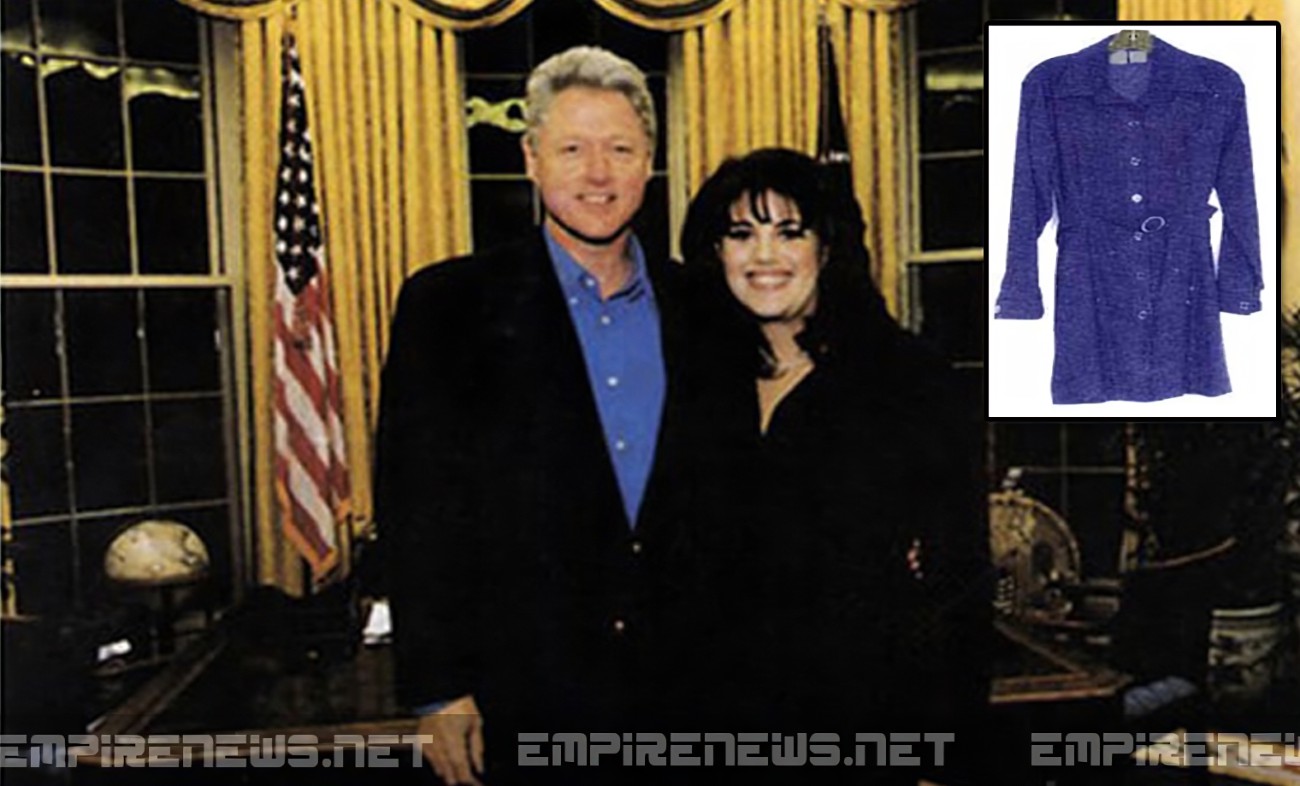
One of the key pieces of evidence that ultimately brought the affair into the public light was the infamous blue gap dress that Lewinsky had kept, which contained traces of Clinton’s DNA. The DNA came from Lewinsky and Clinton becoming intimate one day. In November 1997 she put it in her closet for a thanksgiving dinner, not knowing it was stained. It was on July 28th 1998 that the blue gap dress was given out and the authorities had Clinton’s DNA written all over it. Initially, both Clinton and Lewinsky denied the relationship, but when the dress was tested and the DNA evidence confirmed Clinton’s involvement, the scandal could no longer be suppressed (Donellan, 2021).
This was the tipping point in the scandal. Clinton had not only lied under oath during his deposition in the Paula Jones case but also misled the American people in a televised address. His credibility was severely undermined, and political opponents seized on the opportunity to question his fitness for office. Was Clinton fit for the office that he claims he never had a relationship with Lewinsky?
To learn more about Online Reputation Management, click here.
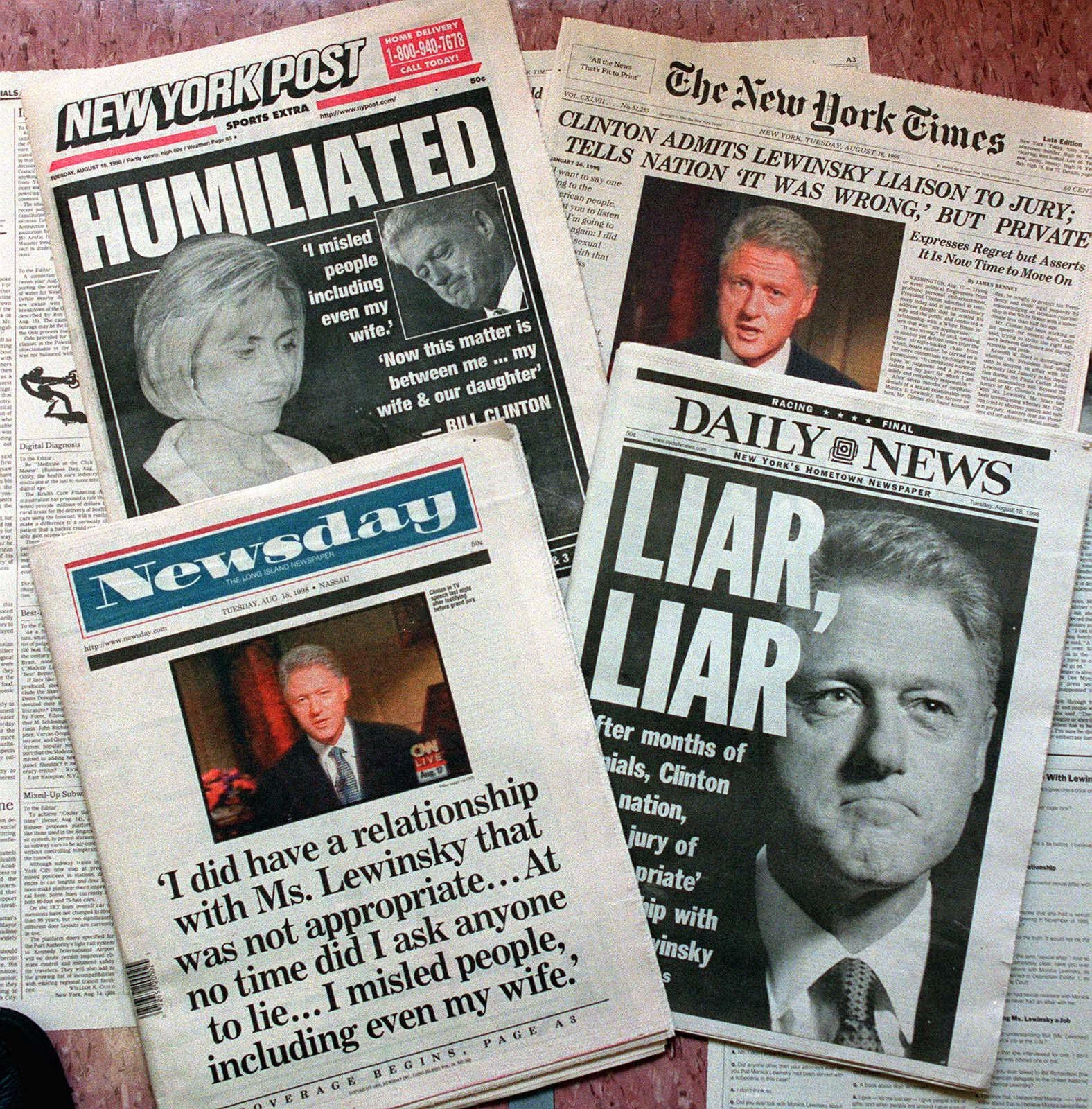
Legal and Political Fallout: Perjury and Obstruction of Justice of Bill Clinton
The revelation of the affair and the subsequent discovery of Clinton’s perjury led to a rapidly escalating political and legal battle. Kenneth Starr expanded his investigation to include perjury and obstruction of justice charges against Clinton. He submitted a detailed report to Congress, known as the Starr Report, which outlined the nature of the affair, Clinton’s efforts to conceal it, and potential violations of the law.
The Starr Report was released to the public in September 1998 and contained explicit details of the Clinton-Lewinsky relationship, including testimony from Lewinsky herself. The public was divided on whether the president’s personal conduct was sufficient grounds for impeachment, but many agreed that the revelations damaged the integrity of the office. He stated that Lewinsky had ten sexual encounters with president Clinton. Eight encounters happened while she was at the whitehouse working and two after working there. These encounters happened near the oval office (BBC, 1998).
In October 1998, the House Judiciary Committee began considering articles of impeachment, and on December 19, 1998, the House of Representatives voted to impeach President Clinton on two charges: perjury before a grand jury and obstruction of justice. Clinton became the second president in U.S. history, after Andrew Johnson in 1868, to be impeached.
To learn more about Online Reputation Management, click here.
The Senate Trial and Acquittal
Following his impeachment by the House, the matter moved to the Senate for trial in early 1999. The key issue was whether Clinton’s actions constituted “high crimes and misdemeanors,” the standard required for removal from office under the U.S. Constitution.
The Senate trial began in January 1999, with Chief Justice William Rehnquist presiding. Clinton’s defense team argued that while the president had indeed had an affair and lied about it, these actions did not meet the threshold for removal from office. They maintained that the charges stemmed from personal indiscretions rather than abuse of presidential power.
On February 12, 1999, the Senate voted on the articles of impeachment. The vote to convict Clinton on the perjury charge fell well short of the required two-thirds majority, with 45 senators voting guilty and 55 voting not guilty. Similarly, on the obstruction of justice charge, 50 senators voted guilty and 50 voted not guilty. Clinton was acquitted and remained in office until the end of his second term in January 2001. It is known that 5 republicans joined all 45 democrats into the acquittal of President Clinton. That was the first time that they had ever impeached a president in 131 years of presidencies (Baker & Dewar, 1999).
To learn more about Online Reputation Management, click here.
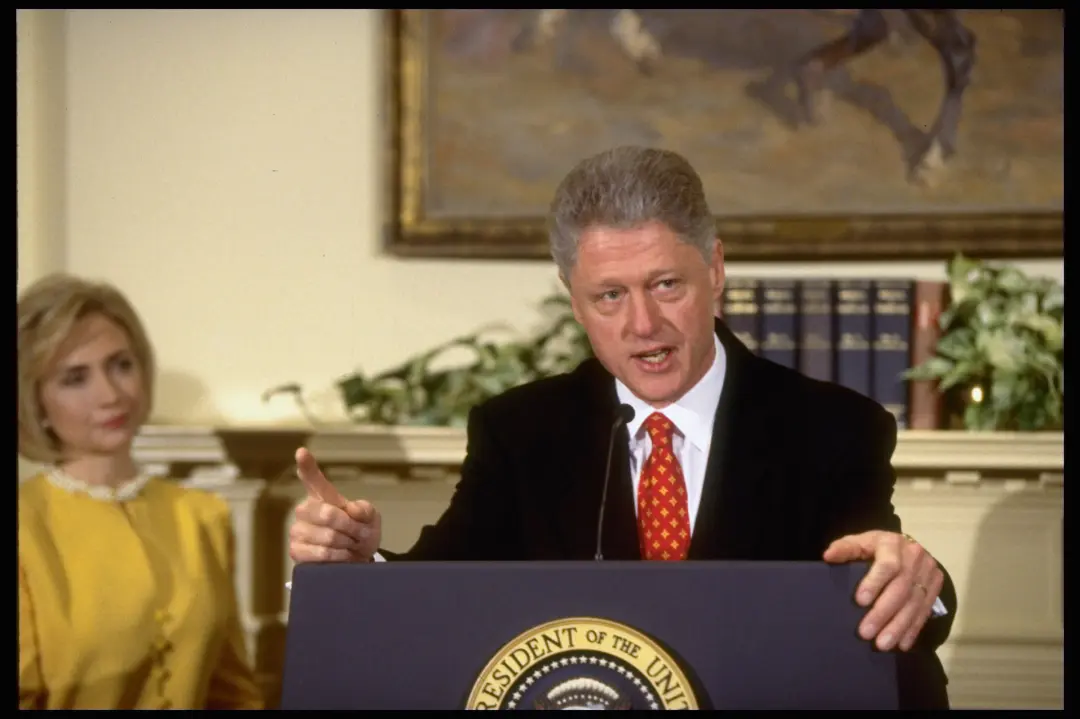
Public Reaction and Media Frenzy
The Bill Clinton/Monica Lewinsky scandal and subsequent impeachment captivated the media and the public for months. It was one of the first major political events to unfold in the 24-hour news cycle, with round-the-clock coverage from networks like CNN, as well as talk shows, tabloid newspapers, and late-night comedy. The scandal was discussed, debated, and dissected in nearly every household, turning it into a cultural moment that defined the late 1990s.
The public’s reaction to the scandal was polarized. While some Americans were outraged by Clinton’s behavior and believed it reflected a lack of moral character, others felt that the scandal was blown out of proportion and that it was unfair to impeach a president over a personal affair. Clinton’s approval ratings, surprisingly, remained high throughout the impeachment process, hovering around 60%. Many Americans saw the impeachment as politically motivated, driven by partisanship rather than genuine concern for the rule of law.
After impeachment, it took Clinton 2 hours to discuss with the nation and tell them that he was truly “sorry” and that he created a “burden for congress and the American”. He included several points such as building the nation and making sure people work together for the betterment of the future. Clinton claimed that this treacherous issue would help to “reconcile and renew” the American nation (Baker & Dewar, 1999).
To learn more about Online Reputation Management, click here.
Impact on Monica Lewinsky
While Clinton survived the scandal politically, Monica Lewinsky’s life was forever altered. As a young woman in her early twenties, she found herself at the center of an international media storm. Lewinsky was vilified in the press, and her private life became fodder for public discussion. In the years that followed, she largely retreated from public life, although she later re-emerged as an advocate for anti-bullying and anti-cyberbullying initiatives and spoke candidly about her experiences.
Lewinsky’s involvement in the scandal also raised questions about the power dynamics at play. As an intern in her early twenties involved with the most powerful man in the world, many argued that the relationship was inherently exploitative, regardless of whether it was consensual. While on Jake Tappers show “ The Lead”, Lewinsky claimed that “ we never should have gotten to a place where consent was a question. She claims that the behavior of the president was very inappropriate because he was a 49-year-old president and she was a 22-year-old intern (LeBlan, 2021).
To learn more about Online Reputation Management, click here.
The Long-Term Effects of the Impeachment on Clinton’s Legacy
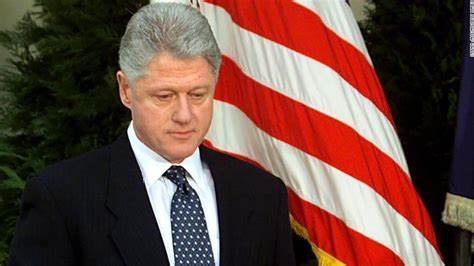
The Bill Clinton/Monica Lewinsky scandal and subsequent impeachment have had a lasting impact on Clinton’s legacy. While Clinton was able to finish his term in office, the scandal has remained a prominent part of his historical narrative. Although he is often remembered for his economic achievements and foreign policy initiatives, the Lewinsky scandal is an inescapable aspect of his presidency. This will always remain a part of his history. As we remember Clinton got impeached in 1998 but in 1997 he founded the Clinton Foundation. Clinton was planning to build a graduate school for public service. He created his foundation for future charity work not knowing he would be impeached. Since the people saw the legacy he built and his foundation, they were somewhat proud (The Washington Post).
As the impeachment went on, Clinton’s ratings from the public’s opinions stayed at 70%. When it came to Character and honesty from President Clinton, the people were unhappy. His performance was great at this time for the people, but people definitely looked down on Clinton for his poor conduct. The American people did not whole-heartedly want Clinton to be impeached and taken away. Finally, the people loved how Clinton dealt with the white house, the economy and public affairs (Riley, 1975).
In the years following the scandal, Clinton himself had expressed regret over the affair and the pain it caused both his family and the country. However, the scandal also reinforced the idea that personal misconduct and public office are deeply intertwined in the modern era. Politicians are no longer shielded from scrutiny regarding their personal lives, and public opinion often plays a major role in determining whether a leader can survive a scandal.
To learn more about Online Reputation Management, click here.
The Impeachment Process of Bill Clinton
The impeachment of Bill Clinton set an important precedent in American politics. It highlighted the constitutional process of impeachment and the complexities involved in trying to remove a sitting president. Some historians argue that the Clinton impeachment made future impeachment proceedings more likely, a theory that came to fruition during the presidency of Donald Trump, who faced impeachment twice during his time in office.
Clinton’s impeachment also underscored the role of partisanship in the process. Twenty years ago in the senate, two parties would work towards bipartisanship which was much clearer and fair (Wire, 2020). While the founders envisioned impeachment as a way to check abuses of power, the Clinton case demonstrated how political motives could influence the proceedings. Republicans, who controlled Congress at the time, were largely in favor of impeachment, while Democrats remained staunchly opposed. Both sides seem to go against the impartiality of the other causing mayhem (Wire, 2020).
To learn more about Online Reputation Management, click here.
Conclusion
The Bill Clinton/Monica Lewinsky scandal and subsequent impeachment remain a defining chapter in U.S. political history. The scandal raised questions about the boundaries between personal and public behavior, the ethics of political leadership, and the role of impeachment in American democracy. While Clinton’s presidency ultimately survived, the legacy of the scandal continues to shape how we view political scandals and their consequences today. It is indeed true that reputations can be fixed, due to the Clinton Foundations rise before the impeachment, he aimed to do some more fundraising involving Goldman Sachs. This made his reputation improve overtime (The Washington Post).
For those interested in understanding how personal indiscretions can become public crises, the Clinton/Lewinsky scandal serves as a powerful reminder of the impact that private actions can have on public life. Usually it is known that people of high stature or presidents should be able to conduct themselves in a respectful way. This was not the case, this scandal impacted Lewinsky’s privacy and gave her a bad reputation. At this point, lying was the remedy for everything in Washington Politics. Trump learned a lesson from Clinton, which was “don’t let the truth get in the way of politics”. Lying made Clinton a political genius but did impact him severely as he finally got impeached (Harris, 2018).
To learn more about Online Reputation Management, click here.

